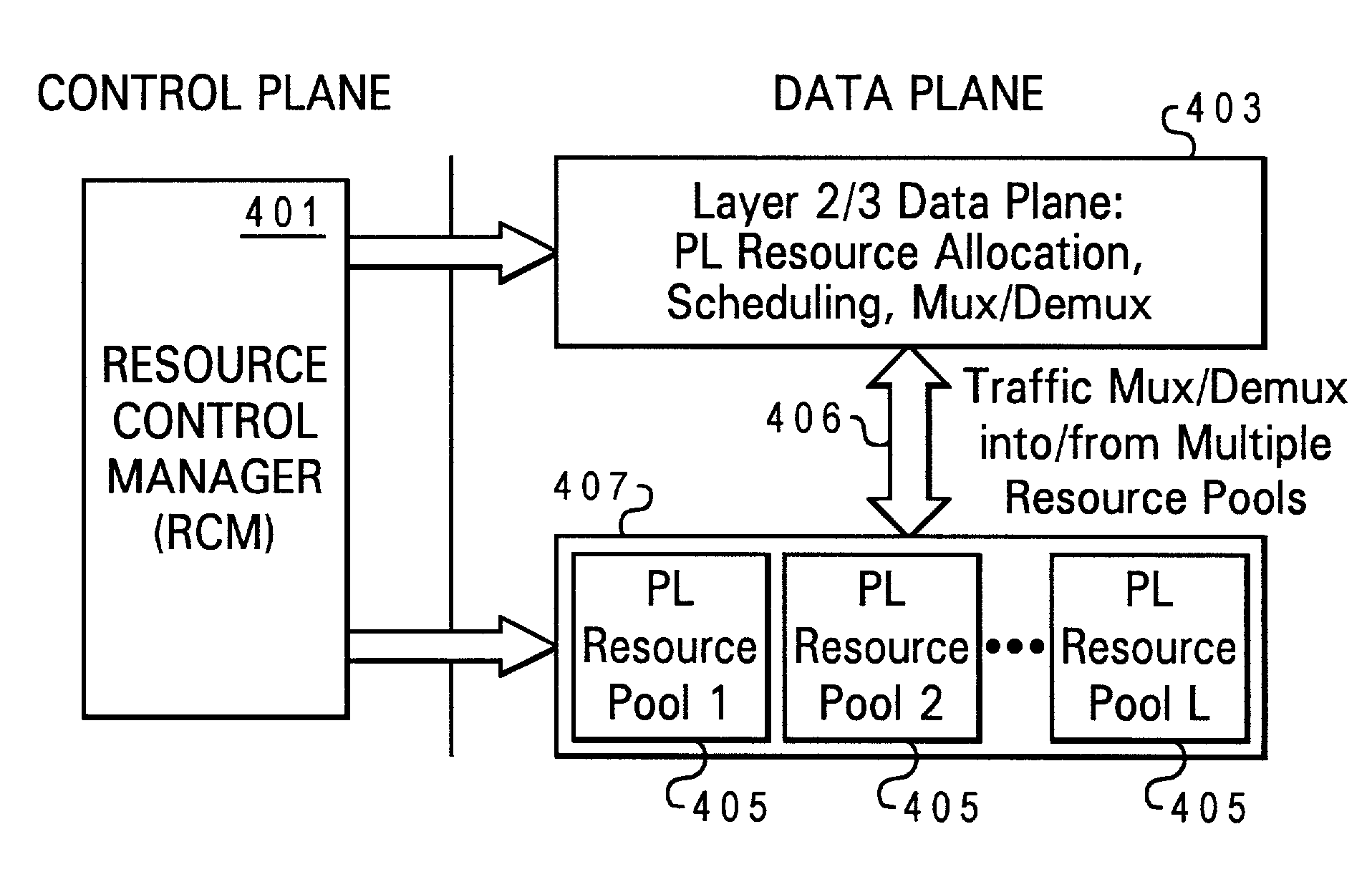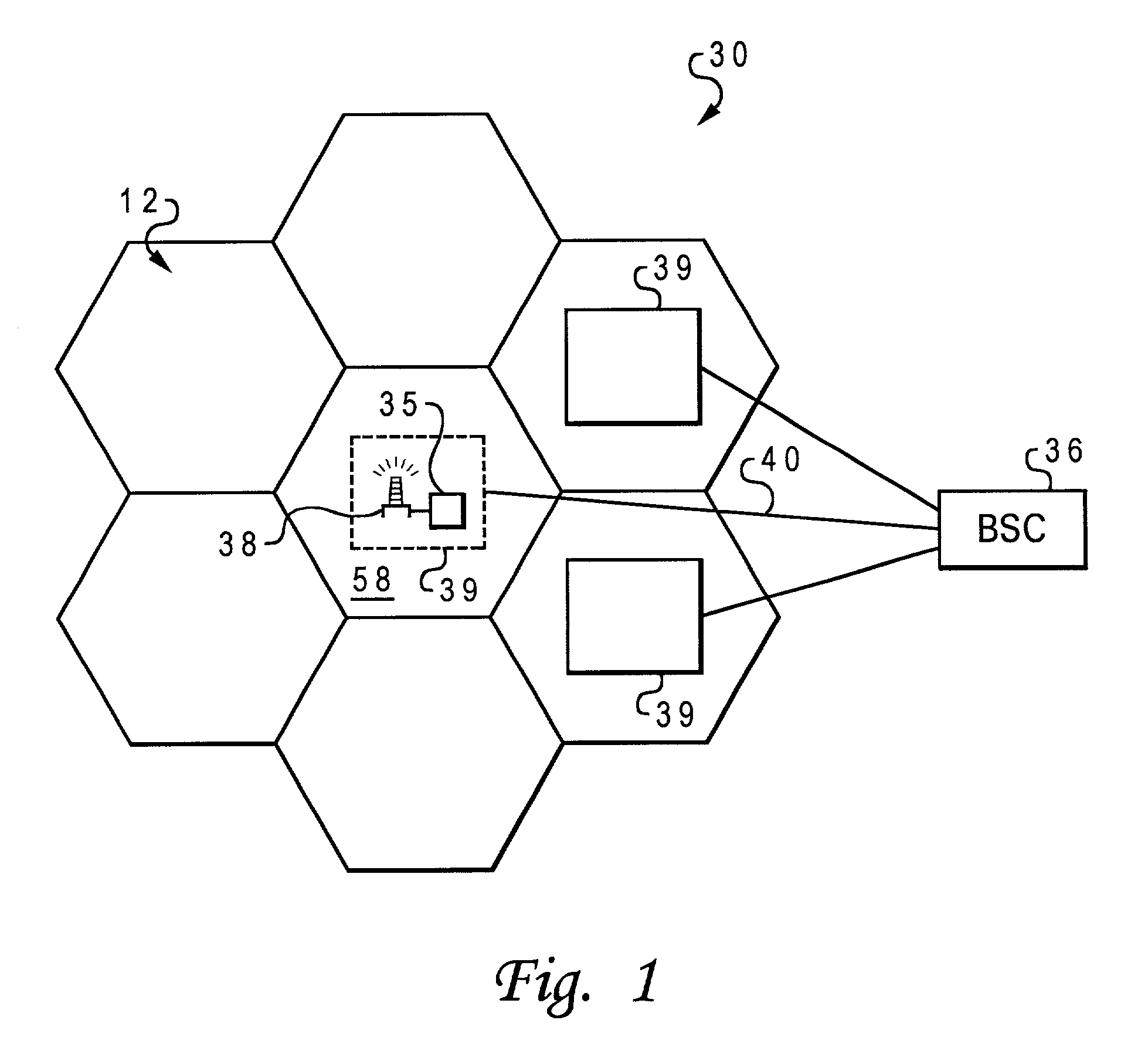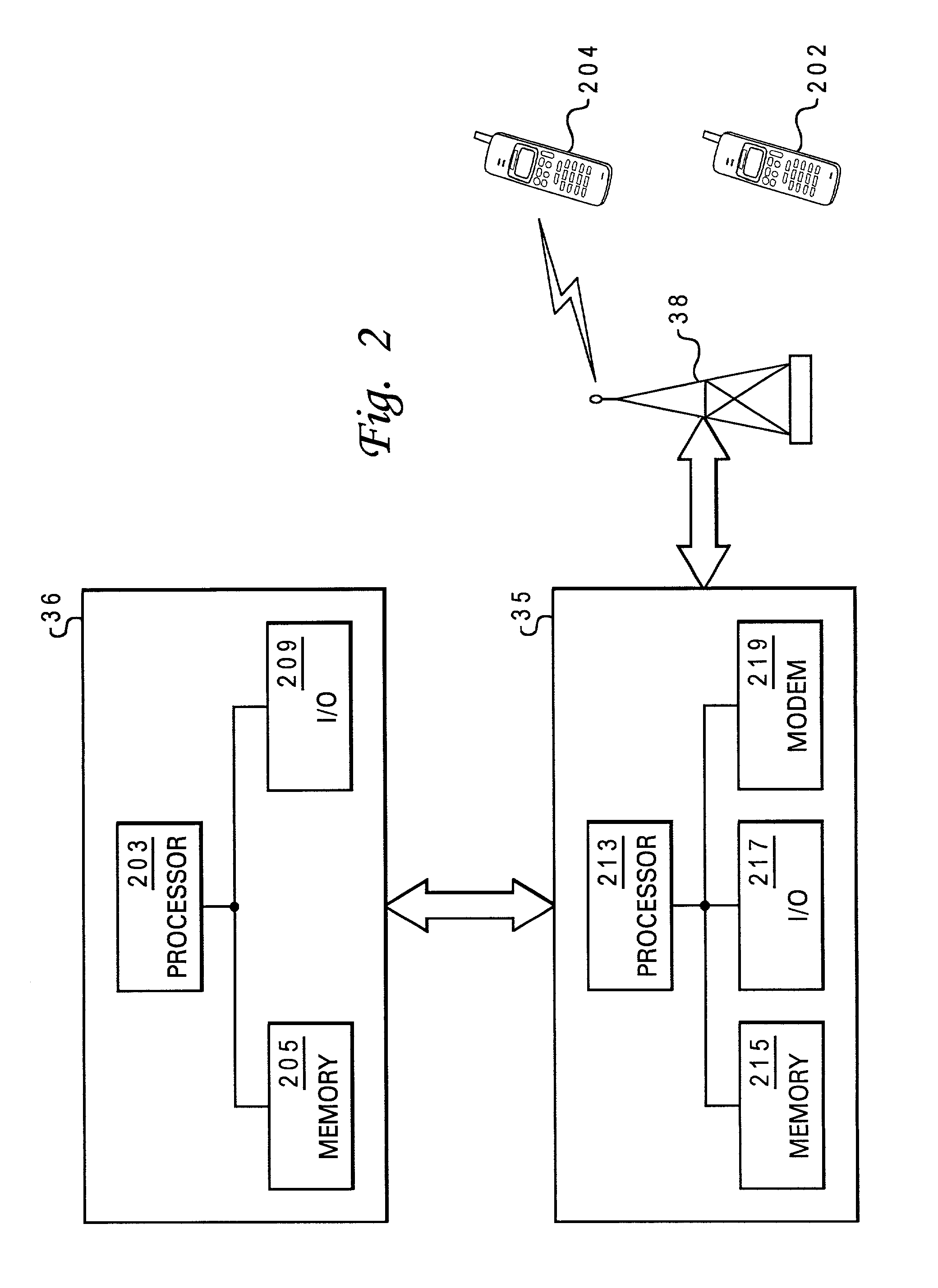Service-driven air interface protocol architecture for wireless systems
a wireless system and air interface technology, applied in the field of wireless systems, can solve the problems of limiting the total amount of traffic (i.e., load) allowed on the carrier, addressing high-speed data (hsd) applications, and proving to be a hurdl
- Summary
- Abstract
- Description
- Claims
- Application Information
AI Technical Summary
Benefits of technology
Problems solved by technology
Method used
Image
Examples
Embodiment Construction
[0025]With reference now to the figures and in particular with reference to FIG. 1, there is illustrated a CDMA network within which the features of the present invention may advantageously be implemented. CDMA network 30 includes a plurality of cells 12. A representative cell 58 of CDMA network represents a fan-out area for propagation of signals from base station antenna 38 affiliated with base station 35. The combination of the base station 35 and its affiliated base station antenna 38 constitutes a base-station transceiver subsystem (BTS) 39. CDMA network 30 comprises a plurality of BTS. BTS 39 in representative cell 58 is connected to its base station controller (BSC) 36 over a backhaul link 40, which manages the communication processes of BTS 39. CDMA network 30 provides communication between one mobile unit (not shown) and another mobile unit or other communication unit via BTS 39. According to the embodiment described herein, CDMA network 30 is a multi-carrier network that s...
PUM
 Login to View More
Login to View More Abstract
Description
Claims
Application Information
 Login to View More
Login to View More - R&D
- Intellectual Property
- Life Sciences
- Materials
- Tech Scout
- Unparalleled Data Quality
- Higher Quality Content
- 60% Fewer Hallucinations
Browse by: Latest US Patents, China's latest patents, Technical Efficacy Thesaurus, Application Domain, Technology Topic, Popular Technical Reports.
© 2025 PatSnap. All rights reserved.Legal|Privacy policy|Modern Slavery Act Transparency Statement|Sitemap|About US| Contact US: help@patsnap.com



